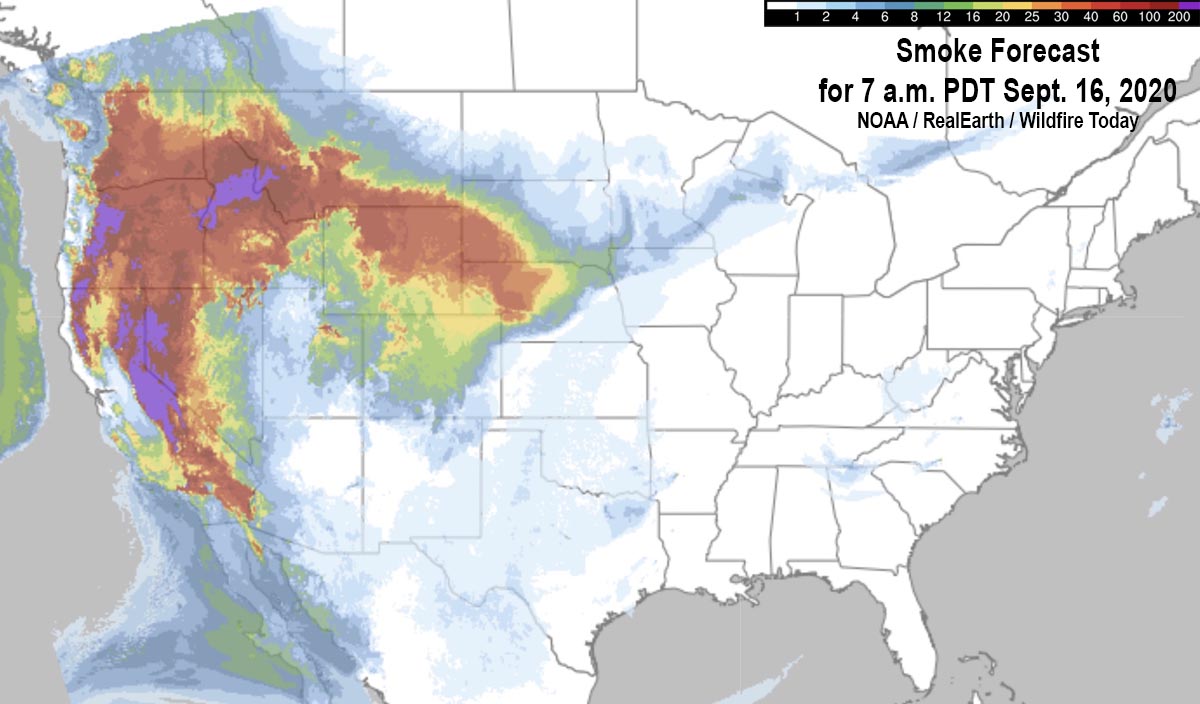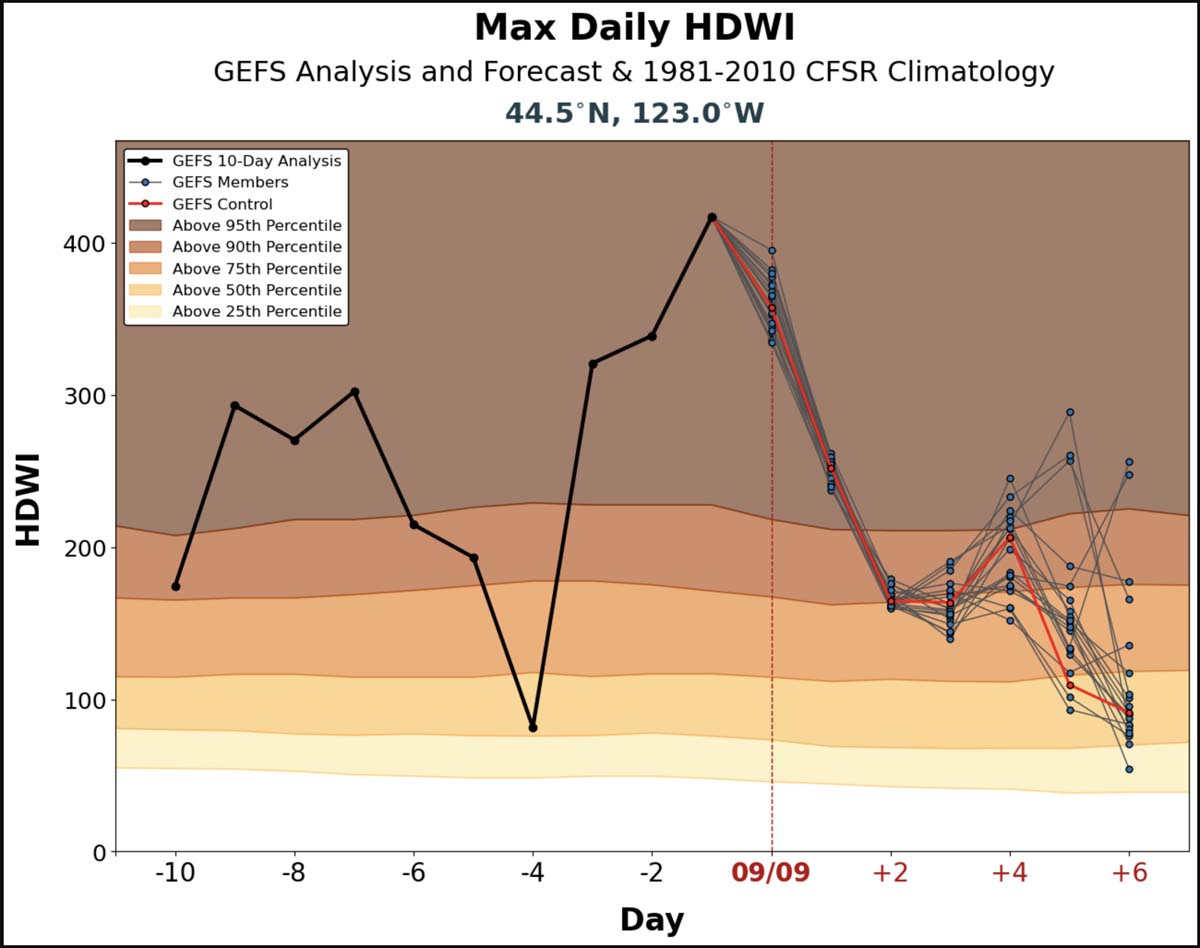The forecast for wildland fire potential issued June 1 by the National Interagency Fire Center for June through September predicts wildfire potential will be higher than normal in the Southwest until the monsoons arrive in July. For the rest of the period, fire potential will be increasing in the Great Basin and the Pacific Coast states. From July through September nearly all of the mountainous areas of California, Oregon, and Washington are in the above normal category.
NIFC has modified their prediction for the Northern Rockies to show higher than normal fire potential in August for Idaho, Montana, and most of Wyoming.
The entire eastern half of the U.S. is not expected to have any areas with above normal potential through September.
The data from NIFC shown here represents the cumulative forecasts of the ten Geographic Area Predictive Services Units and the National Predictive Services Unit.
Below:
- An excerpt from the NIFC narrative report for the next several months;
- NIFC’s monthly graphical outlooks;
- NOAA’s three-month temperature and precipitation forecasts;
- Drought Monitor;
- Keetch-Byram Drought Index.
“The year-to-date acres burned remains well below the 10-year average and significant fire activity was also limited during May. The absence of critical fire weather patterns in areas with very dry fuels helped limit significant fire activity in May. Fuels remain very dry across large swaths of the Southwest, Great Basin, and California with fuel dryness in much of the West two to four weeks ahead of schedule.
“Drought expanded and intensified over the West, especially in California. More than 87% of the West is now categorized in drought and over half the West in the highest two categories of drought. Snowpack set new record lows in parts of the West, including the Sierra, in May.
“Climate outlooks indicate warmer and drier than normal conditions are likely for much of the High Plains and West through summer continuing and exacerbating drought there. Near normal timing and precipitation is likely with the Southwest Monsoon in July, which should help alleviate drought conditions and significant fire activity, at least temporarily.
“Southern Area is likely to have near normal fire potential through the summer with below normal potential across the southern Plains in June. Near normal significant fire potential is also likely for Eastern Area and Alaska through the summer, although elevated periods of activity are possible during short-term drying episodes.
“The Southwest is forecast to have above normal significant fire potential through June before the Southwest Monsoon arrives.
“Above normal significant fire potential will expand northward into the Great Basin and Rocky Mountain Geographic Areas through August with areas closer to the monsoon likely returning to near normal significant fire potential in July and August.
“Central Oregon into southeast Washington is likely to have above normal significant fire potential beginning in June with portions of the Coast Ranges, Sierra, and Cascades in California increasing to above normal in June and July and continuing through September.
“West of the Continental Divide in the Northern Rockies is expected to have above normal significant fire potential in July before spreading across the entire geographic area during August, then likely returning to normal in September.
“Leeside locations of Hawaii are likely to have above normal significant fire potential into September due to heavier fuel loading and forecast warm and dry conditions.”
Continue reading “NIFC’s forecast for wildfire potential this summer”















